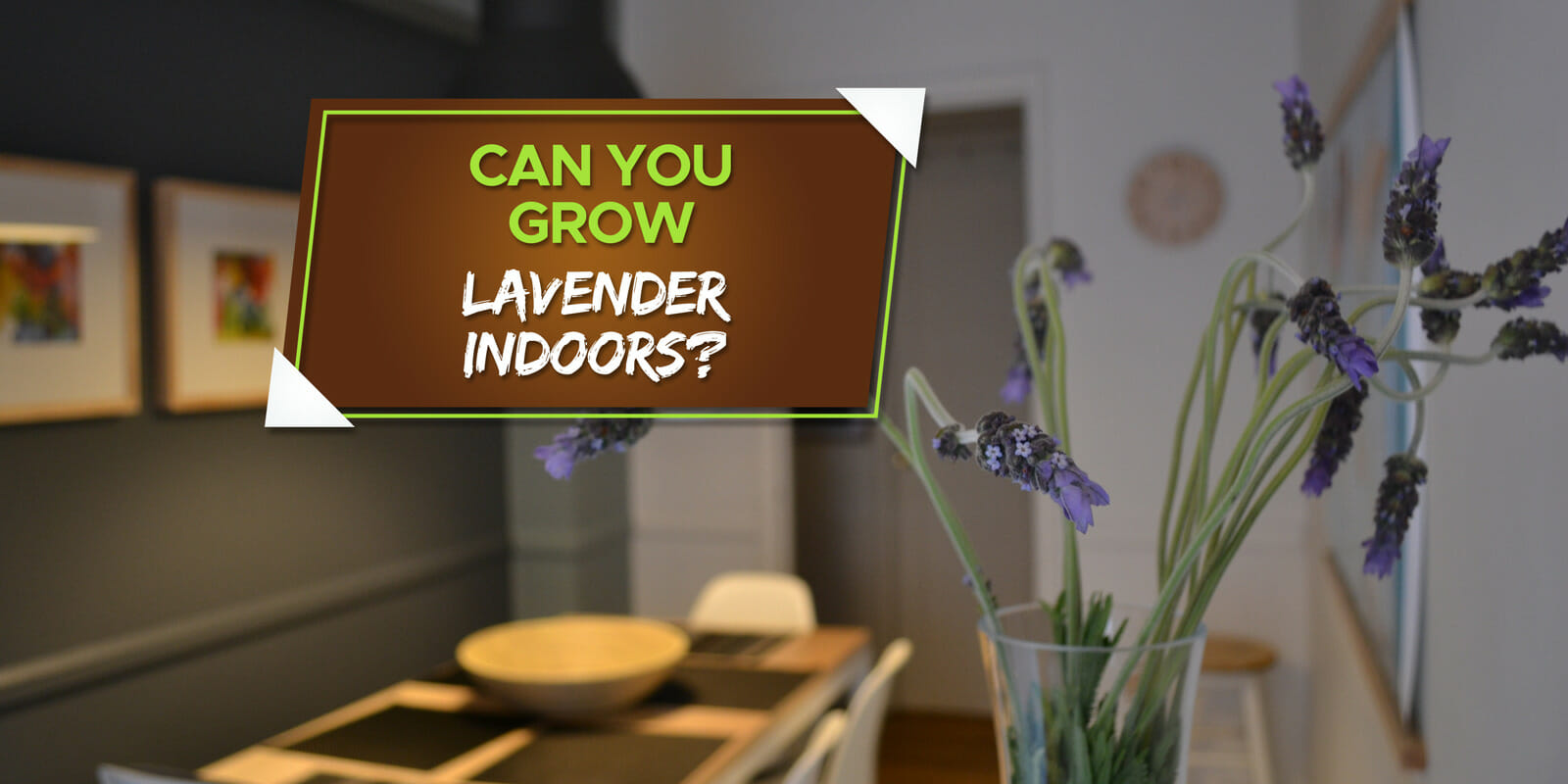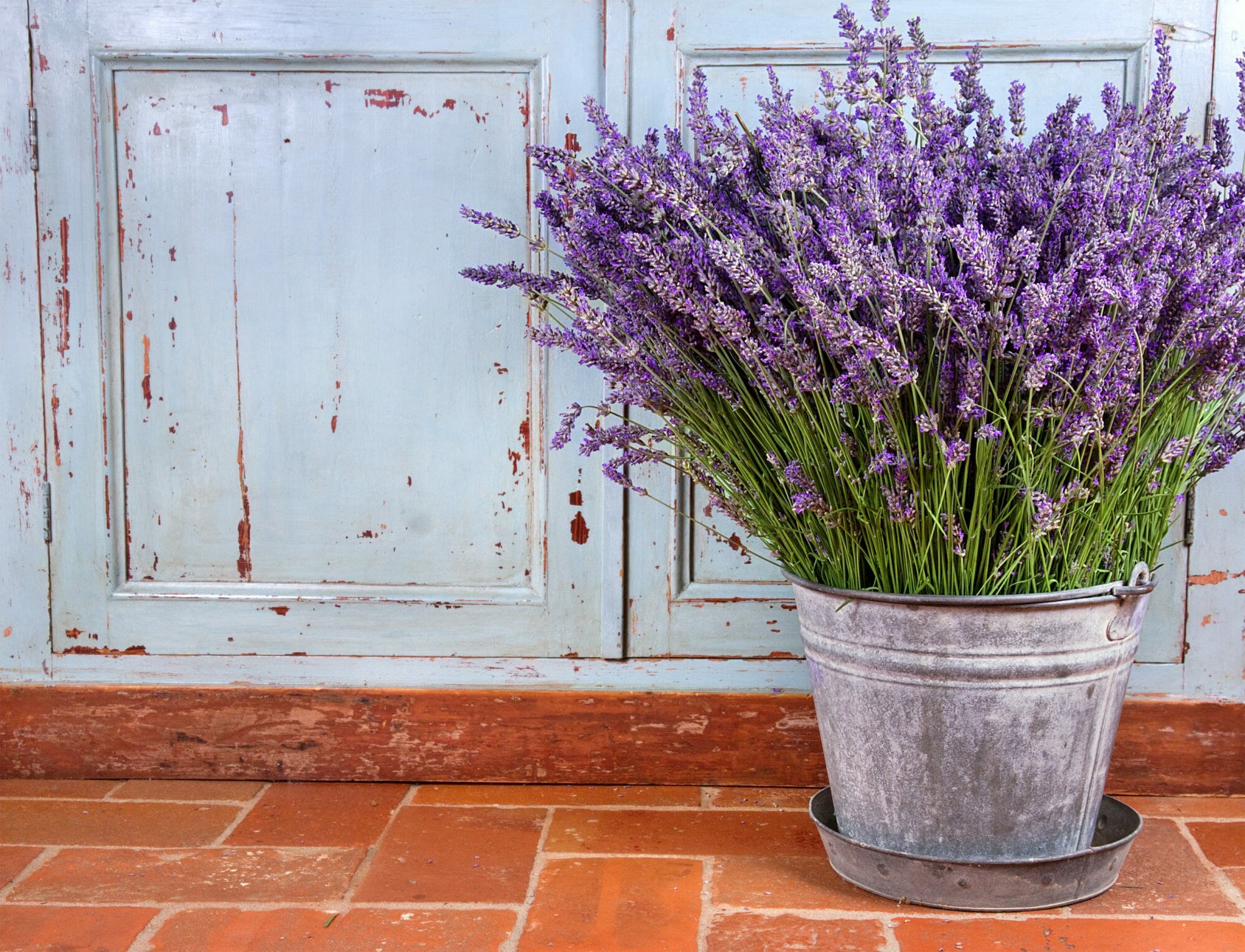If you’ve been wondering whether or not you can grow attractive and beneficial lavender plants indoors, this is the article for you.
Can you grow lavender indoors? Yes, absolutely. Lavender has gorgeous flowers and an extremely calming scent, and it’s a favorite for every plant lover. Many people who can do so choose to grow lavender outdoors, but not many people know that you can grow lavender in your indoor garden just as well.
Growing Lavender Indoors
Now that you have all that information about the benefits of lavender, you can now embark on the journey of growing your own lavender indoors!
Light Conditions For Growing Lavender Indoors
Providing your plant with direct, bright light is essential to help your indoor lavender produce flowers and thrive. Lavender needs enough light and will automatically grow towards the brightest part of your home.
In order for your indoor plants to be healthy and vibrant, you must keep them near a window that receives as much light as possible.
Ideally, your lavender should get all-day sun but since this plant is growing indoors, ensure it gets at least 3-4 hours of direct sunlight every day.
Place the pot on the windowsill of a south-facing window for optimal sunlight exposure and rotate it twice every week in order to achieve uniform growth and flowering. If you don’t have a south-facing window, then pick the window facing west as the next best option.
If you have neither south nor west-facing windows and/or your windows are partially shaded, then you will have to supplement the light source to ensure the healthy growth of your lavender.
You can do this by hanging fluorescent or full-spectrum LED grow lights 6 to 12 inches above your lavender plant.
Temperature Conditions For Your Indoor Lavender
Although lavender plants love heat since they’re originally from the Mediterranean, growing them indoors gives you control of the air drafts during the fall and winter when it can get really cold.
During the winter season, move your indoor lavender to a room that is generally cooler than the rest of the house.
This is because, in the winter, lavender plants are not actively growing as they do during the summer, fall, and spring seasons. Also, note that lavender plants are grown indoors still need varying temperatures during the day and night.
Ideally, you should aim for about 21°C during the day and 10-13°C at night in the spring to mid-fall seasons for optimum growth.
In the late fall through winter, aim to keep temperatures at 15-18°C during the day and 7-10°C at night for maintenance. An air conditioning system in your house would be ideal.
Humidity For Growing Your Lavender Plant Indoors
Lavenders love a low-humidity climate, so think warm and arid as opposed to warm and wet, cold and wet, or cold and dry. This means that most homes, with a humidity of about 40 percent, are ideal for growing lavender indoors. Ensure you maintain this level of moisture in the air.
Air Circulation For The Perfect Lavender Plant
Lavender plants grow properly when they have a good, constant airflow; therefore, ensure you maintain a distance of at least 3 inches between plants.
This will also help prevent fungal and mold infestations as well as a potential insect infestation from killing the plant. Expose the lavender to a gentle breeze for at least two hours a day from an open window.
How To Water Your Lavender
Lavender prefers to stay on the drier side; it’s a drought-resistant plant that needs less water than other plants, so some time between watering to allow the potting soil to dry slightly is best to avoid root rot.
Do not let it get too dry as the leaves will begin to turn yellow. To start, water your lavender when you initially plant it then reduce to watering when you feel the top layer of the soil (about an inch deep) is dry.
Water your plant until the soil is wet but avoid flooding it with water. It would help if you reduced watering in the winter by waiting until the top two inches of soil are dry first.
You can check soil moisture by testing it with your finger. Try to avoid getting water on the foliage so as to prevent any fungal or mold growth.
How To Fertilize Your Indoor Lavender Plant
Lavender plants can be fertilized twice a year; at the beginning of the growing season and then in early fall. Ensure you use a balanced, water-soluble fertilizer in order to prevent over-fertilization, which can lead to vegetative growth preventing flowering, and ensure it’s placed over well-drained soil.
Pruning and Harvesting Your Indoor Lavender
Cut off the branches of your lavender after the first flowering and then prune again during autumn. Ideally, you should remove up to two-thirds of the plant when pruning.
Be very careful not to cut off the woody part of the plant. Encourage a thick and bushy growth in the growing season by pinching the tops of the plant when needed.
Lavender plants can be harvested in the early spring as they have just opened. Harvest the best lavender flowers by gathering the stalks in your hand and cutting at two or so inches above the woody part with sharp scissors.
Potting and Repotting Your Lavender Plant
Choosing the right size of pot for your indoor lavender is very important. The pot you choose for your lavender plant should be around one or two inches bigger than the lavender root ball.
You can repot your lavender once a year, during the early spring, to accommodate for growth and to refresh the soil. Ensure you add fertilizer into the new pot before you repot the lavender.
Important Things To Remember
The Things To Do:
- Ensure your lavender has a lot of sunlight, even more than you would give most plants.
- Pot your lavender in lean soil .i.e. quick-draining potting soil mix. You can do this by filling the bottom of your pot with an inch or two of limestone gravel topped with a basic soilless mix made for containers.
- Keep your soil alkaline by blending a tablespoon of lime into the soil and also adding dried eggshells monthly.
- Use a smaller lavender variety when growing them indoors, like French lavender variety or Spanish lavender.
- Rotate your pot at least twice a week so that your plant grows evenly
- Always prune and harvest with sharp scissors or pruners to avoid damaging the plant.
The Things Not To Do:
- Do not blast cold air through the vents. Keep your plant away from air conditioning ducts and airflow vents and set them near areas that will receive a soft breeze.
- Do not overwater your plant. Lavender gets easily waterlogged and can quickly begin rotting, so ensure you have proper drainage holes in your planter.
- Do not assume the uses of your lavender plant. Some lavender plants are good for their scent, and their aromatherapy benefits, while others can be eaten as a delicacy. Do not try to eat the lavender without research as some foliage can be poisonous if ingested.
- Do not let water splash on the foliage of your indoor plant. Instead, water directly into the potting soil to avoid mold and fungal infestation.
Benefits Of Lavender:
Human use of lavender can be dated back at least 2500 years. The Ancient Romans prized lavender flowers for their healing qualities and scent. It’s native to the Mediterranean region, with Arab, French and Italian populations embracing its numerous benefits, including:
- Lavender plants or a few drops of lavender oil can be used to scent baths. The aromatherapy of lavender is soothing and calming and helps with stress relief. Bath bombs with this scent are quite popular!
- This plant works as an excellent sleep aid due to the calming and soothing effects of the essential oils in lavender. It’s a common addition to scented satchels.
- The foliage sprigs are used in the culinary arts to flavor desserts and drinks.
- Dried flowers can be used in potpourri or sachets to give your home a pleasant smell. If you are feeling extra crafty, you can use them in a DIY candle, bath bomb, or soap-making endeavor.
Frequently Asked Questions:
In summary, here are some of the most frequently asked questions about growing lavender indoors:
How long does it take to grow lavender indoors?
It takes about 14 days – that is, two weeks – for a lavender seed to sprout from the soil. It takes several months for the new growth to reach transmutable or usable size.
How do you care for indoor lavender plants?
Here are the basics of caring for indoor lavender plants:
- You have to position the plant(s) near a window that gets at least three to four hours of bright direct sunlight (or time under a grow light) per day.
- The plant must be grown in well-draining soil so that it can remain healthy and prevent root rot.
- The plant is watered once the top inch of the soil has dried out.
- Fertilize it twice a year with a slow-release fertilizer.
- Keep it in low humidity and moderate temperatures – nothing too hot or too cold.
How many hours of sunlight does lavender need?
Since lavender is a perennial, it thrives under direct sunlight. It can happily survive with a full day of sun, all the time. So ensure that your lavender gets at the very least three hours of direct sunlight each and every day. A full sun environment is non-negotiable when it comes to lavender!
Conclusion
So, can lavender be grown indoors? Yes, and there you have it — how to grow your lavender indoors. Try it out and watch your home and your mind benefit from this amazing plant. Remember to do specific research into each variety of lavender (French lavender and English lavender have different needs, for example) so you can use it correctly.





